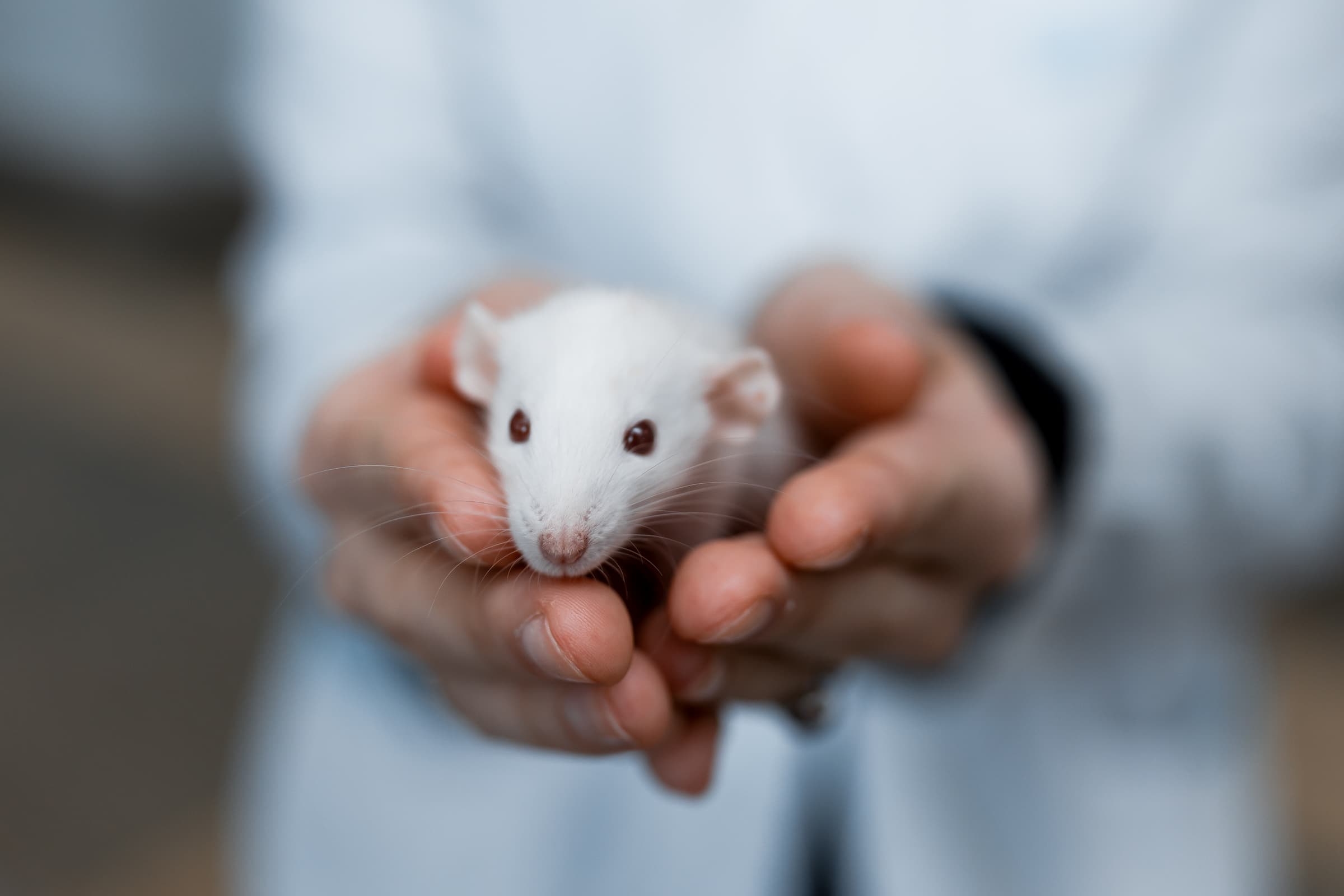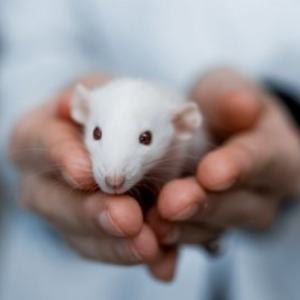Biologists from Samara University used rats for researching treatment of drug-induced depression, which can occur in patients as a result of long-lasting intake of reserpine, a well-known medicine for reducing blood pressure.
As an active ingredient, reserpine is part of many hypertensive drugs that effectively reduce blood pressure; however, it has many side effects, one of which is severe depression to possibly occur in the patient. During the experiments, the scientists analyzed efficiency of relieving attacks of reserpine depression in rats with the help of the antidepressant, such as fluoxetine (widely known in the world under the trade name “Prozac”).

“At present, the problem of widespread depressive disorders is acute all over the world. According to the WHO statistics, about 10–15% of the world’s population suffers from depression. Thereby, it is very important to study the nature of various types of depression and the mechanisms of antidepressants effects on appropriate biological models, for example, on laboratory rats. Despite the fact that many antidepressants have been used in therapy for many years, their effect on various behavioral reactions and behavior in general has not been fully investigated. In course of our research, we studied rats’ behavior influenced by the antidepressant fluoxetine in the pharmacological model of depression caused by taking reserpine”, said Vladimir Belyakov, Associate Professor at Samara University’s Department of Human and Animal Physiology.
The research involved 18 adult, sexually mature male rats of approximately the same age and weight. Vladimir Belyakov emphasized that during the experiments all necessary norms of bioethics were observed. Initially, the rats were divided into two groups – experimental and reference. The first-group participants were injected with the reserpine solution at a dose of 4 mg/kg, rats from the reference group did not receive the drug. Having injected reserpine, scientists evaluated and compared behavior of the rats in both groups, letting the rodents come inside standard laboratory installations, such as “Raised Cruciform Maze”, “Open Field”, “Barnes Maze”. The way the rats behaved inside the installations was filmed and processed in the special computer software that captures experimental data.
Then the scientists divided the rats treated with reserpine into two subgroups: rats from one subgroup began to additionally receive the antidepressant fluoxetine at a relatively low physiological dose of 0.3 mg/kg, while rats from the second subgroup received a very significant dose of antidepressant – eight times more than that in the first subgroup – 2.4 mg/kg.
“Creating the reserpine model of depression led to forming the special behavioral phenotype of rats. The distinctive feature of the depressed rats’ behavior was the significant decrease in their spatial memory and efficiency of motor navigation in “Barnes Maze”, when finding a true shelter”, stressed Vladimir Belyakov.
According to the scientist, when the task was completed in “Barnes Maze” for the first time, depressed rats needed 28% more time to find on the maze site a hole leading to the real shelter – a burrow to hide, compared with their healthy “colleagues” from the reference group. The second test, conducted 3 minutes later than the first one, also showed the need for more time to move around the maze arena and implement the burrow reflex. That is, the depressed rat did not remember well where, just a few minutes ago, it had discovered a life-saving “hiding place”.
“The maximum difference between the two groups was observed during the third test, when depressed rats spent 67% more time finding true shelter. This pattern can be associated with the direct effect of reserpine on the mediator systems of brain structures that regulate memory function and search activity”, noted Kirill Klimenko, one of the authors of the study, a master’s degree student at the Faculty of Biology.
At the "Open Field" installation, depressed rats had pronounced deficit of horizontal motor activity, moving extremely little and slowly and very rarely entered the center of the arena, and preferring to stay at the sides of the site. Their vertical activity – this is when rats stand on their hind legs, surveying the surroundings, – has decreased almost five times.
As the experiments have shown, after taking the first doses of the antidepressant, spatial memory quickly returned to the rats, with their anxiety to disappear, and interest in exploring the space around them to appear. Furry “explorers” spent less time discovering a real “hiding place” and were much less likely to make mistakes in their searches, and also spent much more time in the light, open corridors of “Cruciform Maze”, hiding less in the dark. However, the scientists did not find significant differences in behavior of rats receiving a small dose of the antidepressant and a large one. That is, as it turned out, for relieving this type of drug depression, the size of the fluoxetine doze taken is insignificant: even small doses have a full-fledged therapeutic effect.
“The behavioral features of depressed rats revealed during the experiments are probably determined by the mechanism of reserpine effects: this drug can effectively block the activity of protein transporters for monoamine mediators, such as norepinephrine, dopamine, serotonin, which are substances of great importance for normal functioning of the body. These mediators are actively involved in functioning of the brain reward system, when positive emotions are formed as the result of a successfully completed action or decision-making. Due to blocking transporters in the brain synapses, there is the temporary increase in mediators of positive emotions. Fluoxetine helps selectively increase concentration of serotonin. Following the results of our research, exposure to fluoxetine had an undeniably normalizing effect on spatial memory and motor activity in depressed rats with the reserpine model of depression. Meanwhile, unusually, no differences in behavioral effects were found in rats with various doses of fluoxetine injected. The research is planned to be continued”, concluded Vladimir Belyakov.
For reference:
The “Raised Cruciform Maze” installation is designed for studying rodents’ behavior in conditions of variable stress factors, and allows assessing the animal’s anxiety level, based on its preference for the dark/light, fear of heights, severity and dynamics of “peering” behavior. The installation consists of two open and two closed corridors of the maze, located perpendicular to each other. It is believed that the less time the rodent spends in the light in open corridors and on the central site of the maze, the higher its anxiety level.
The “Barnes Maze” installation allows exploring processes of spatial memory. It is a circular platform, with its diameter of about a meter, with twenty holes along the edge. In one of the holes, there is a shelter, in which the rodent can hide, there are no “burrows” under the other holes. A healthy animal quickly finds the saving hole by memorizing its location.
The “Open Field” installation can detect a whole range of behavioral components: rodents’ motor activity, anxiety level, and extension of severity of exploratory behavior. “Open Field” is included by the Order of the Ministry of Health Care of the Russian Federation in the list of installations for performing psychopharmacological tests, and is a large area bounded by opaque sides and divided into nine identical squares with round holes in the center of each. The rodent is placed in the center of the site for a predetermined amount of time (3, 5, 10 minutes), and the researcher records horizontal motor activity (number of line crossings, number of jumps), exploratory activity (number of peering into holes and sniffing them), vertical motor activity (number of standing on hind legs) and the number of grooming reactions (washing the muzzle and the whole body).
 RU
RU  EN
EN  CN
CN  ES
ES 